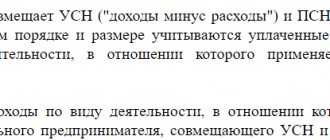Public organizations occupy a very important place both in the political system of the country and in ensuring the independence of its residents. Every person in Russia has the right to found a public association of any kind, and a trade union to protect interests is no exception.
This right is established in the Constitution of the Russian Federation, Article 30. Russia is a country with a democratic state regime, therefore the freedom of public organizations and unions is guaranteed. No one has the right to force a person to join an organization; this happens solely at the will of the citizen himself.
When creating public organizations, people do not have to wait for the consent of government authorities. Such organizations can be registered, in which case they will receive the status of a legal entity. However, the state registration process is not mandatory; associations can exist without it.
There are various types of public organizations: sports associations, mass movements, trade unions, political parties, scientific associations, unions of youth and disabled people, creative associations, etc. First, you need to understand the concept of “public organization.”
What is a public association?
This term means a voluntary non-profit organization founded on the initiative of people who united to achieve common goals. At the moment, the activities of such organizations are coordinated by the Federal Law “On Public Associations” of May 19, 1995.
In other words, a public organization is a union of people created on the basis of their interests and on the principle of voluntary membership. This type of organization has its limitations:
- armed associations cannot be organized;
- it is necessary to comply with the legislation of the Russian Federation;
- not to violate the territorial unity of the state.
The characteristics of associations include voluntariness, action strictly in accordance with the charter and non-profit nature. In modern conditions, such a union as a public organization has become very popular. The concept and types are very interesting to historians and politicians.
Why was there a need for an organization?
As is known, many structures have developed over time under the influence of customs. Some people's needs, such as cooking, raising children, etc., were satisfied in the family, as well as among relatives and neighbors, during working and free time. In modern societies, compared to past ones, people are interconnected in many ways. Their numerous and varied needs are satisfied through direct connections. This does not require personal acquaintance of people. This is sometimes explained by the range of distances. But the main factor is the division of labor. Under these conditions, the need for organization arises.
With the formation of an organization, a specific group of people that existed before that time takes on the form of an association. Of course, this is an association of like-minded people, amateurs or people organized for some other reason. That's what organization is. Now let's look at their types in more detail.
Organizational and legal forms of public associations
According to one of the articles of the Federal Law “On Public Associations”, the following types of organizations are distinguished, which can be founded according to legal forms:
- social movement - an association founded to achieve political and social goals. Social movement participants do not have membership;
- a public foundation is one of the types of non-profit associations whose participants do not have membership. The main goal of this association is the creation of property based on voluntary contributions and other revenues that do not contradict the legislation of the country;
- a public institution - a union, also without membership, its main goal is to provide certain services;
- public amateur body - an association whose participants do not have membership. The main goal of the body is to solve certain types of problems that arise for people at their place of residence and study;
- political party is a public organization participating in the formation of government bodies and expressing the political will of its members.
Organizational activities and structure
The joint activities of employees in an organization will be most effective provided that each of them clearly understands their role in the team. This is typical for any enterprise and institution, including commercial and non-profit organizations. Creating a role system is essentially an administrative function of organizational activity. The latter is considered as a grouping of various types of activities required to achieve the goals; subordination of each group to a leader with specific powers, and ensuring horizontal and vertical coordination in the structure.
Organizational structure is a set of elements that form a management system, as well as the connections between them. It ensures clarity of team actions so that each employee knows what he should do and who is responsible for the results, can prevent or eliminate problems that arise, create information flows, and ensure communication between departments.
Classification of public associations
In addition to unions, which differ in legal form, there are also other features of their classification. The main types of public organizations were indicated above. Now other types and forms of such organizations will be considered. Types of public organizations and associations in accordance with the degree of participation in the struggle for power:
- having a non-political orientation, that is, they do not set a goal to be a participant in the struggle for power and do not try to make changes in political relations in the country;
- having a political orientation, that is, those associations that are active participants in the struggle for power and use certain means for this.
In accordance with the relationship of associations to the present system:
- conservative;
- reformist;
- revolutionary;
- counter-revolutionary.
Types of public organizations in the Russian Federation by methods of action:
- legal;
- illegal;
- formal;
- informal.
And finally, based on the scale of activity, the following associations are distinguished:
- international;
- regional;
- of a local nature.
Responsibilities and functions of public organizations
What should public organizations do? The types and functions of these associations, despite their apparent simplicity, have repeatedly raised doubts and disputes. Responsibilities and functions are slightly different concepts. First you need to consider the responsibilities of public organizations:
- the main thing is to follow the legislation of the Russian Federation, as well as generally recognized norms and principles of international law;
- annually publish a report on the property or provide access to it;
- every year inform government authorities of the intention to continue its activities, here it is necessary to indicate the founders of the association, as well as the permanent address;
- provide authorities with the right to familiarize themselves with the organization’s charter;
- inform government authorities about the receipt and use of funds from foreign organizations.
Now we need to move on to consider the functions of public organizations:
- human orientation towards specific goals, that is, socialization and mobilization;
- inclusion of people in the political system through cooperation or conflict;
- creation of new non-traditional political structures;
- representation of social interests.
Main activities of a public organization
As already noted, people join a public association on a voluntary basis, and based on this fact, we can conclude that the activities of organizations are aimed at their improvement and prosperity. Governing bodies are established here through elections. The activities of a public organization can be useful not only for its members, but also for other people who are not members of the organization.
Types of public organizations play a major role in setting the objectives of associations. There are several types of tasks that determine the direction of an organization. Public associations can serve the interests of entrepreneurs and commercial organizations, workers and employees, as well as promote the ideas of religious, political and other organizations.
The types of activities of public organizations are distinguished depending on the type of association. The activities of business and professional organizations include work to promote the interests of both members of commercial associations and ordinary employees.
The activities of trade unions include:
- activities to protect the interests of employees and members of the association;
- the activities of organizations whose members are interested in protecting their interests on issues of wages and working conditions;
- other actions of trade unions of various organizations that are created on an industry or structural basis.
The activities of other associations include the actions of all organizations (other than business and trade unions) that protect the interests of participants. The types of activities of public organizations included in this group are presented below:
- the activities of religious associations, which consist in the spread of faith and its joint confession;
- actions of political parties, movements, associations, the main goal of which is to form people’s opinions through the dissemination of information;
- the activities of non-political organizations that also shape people’s opinions, but through educational activities, raising the necessary funds, etc.;
- activities of creative groups, for example, book clubs, historical clubs, musical and artistic associations;
- activities of various unions of motorists, consumers, dating;
- activities of patriotic associations, unions for the protection of social groups.
Organization - what is it in simple terms
Organizations are divided into types, depending on their size, composition, goals and objectives, as well as methods for achieving them.
From a historical point of view, they can be divided into:
- Communities
- Associations
- Corporations
For management, the least interesting are small organizations that have one specific goal, whose activities are aimed only at obtaining it and providing profit to the owners. Management studies are much more likely to look at how to coordinate complex organizations that have unique characteristics.
Non-profit organizations
This kind of association can be created to solve problems of education, health care, science and culture. A non-profit organization is an association whose participants do not have membership, based on voluntary contributions from citizens and legal entities. There are a huge number of different types of such organizations; the most basic ones will be considered here. Types of non-profit public organizations:
- Fund. This is the most common form of non-profit association. Its purpose is to solve social, cultural or other problems by collecting property contributions. The fund has its own characteristics that distinguish it from other organizations of this type. There is no membership, which means that members of this organization cannot manage the fund. This association is the owner of its property, and its governing bodies are not responsible for its debts.
- Charitable foundation. This is an organization created for the purpose of collecting property contributions for charity. This kind of fund has a charter regulating its activities. As a rule, a charitable foundation finds a sponsor, and he becomes its founder. This can be either a state or an enterprise, or any individual. If there is no such sponsor, the fund itself makes money in various ways.
- Union (association). This is a non-profit organization founded by combining several legal entities. According to the legislation of the Russian Federation, the union excludes the simultaneous presence of commercial and non-profit organizations. Associations are created to represent the interests of companies and to coordinate their activities.
- Consumer cooperative. It is an association of citizens and (or) legal entities on a voluntary basis, the main goal of which is to satisfy the various needs of its shareholders. Shareholders are people who have made a share contribution and are participants in the association. Both ordinary citizens and legal entities can act as shareholders of a consumer cooperative.
- Religious association. This is a union of people that was founded for the purpose of sharing religion and spreading it. Signs of a religious association include teaching its followers, performing worship, and worshiping. Participants in such a union can only be individuals.
Associations and unions of public organizations
The right to unite PAs into unions or associations is provided for in paragraph 3 of Art. 123.4 of the Civil Code of the Russian Federation. According to the provisions of Art. 13 of Law No. 82-FZ, public associations of any organizational and legal form, including public organizations, have the right to unite into associations or unions. The new person adopts an independent charter or constituent agreement and receives legal capacity from the moment of its state registration. Its members fully retain their legal capacity as a legal entity. Unions and associations are recognized by the legislator as an independent organizational and legal form in Art. 123.8 of the Civil Code of the Russian Federation.
Such associations are the owners of property that is acquired to support their activities (Article 32 of Law No. 82-FZ). According to Art. 5.1 of Law No. 82-FZ, associations and unions also have the right to create territorial divisions. The association's charter can determine whether these branches will also be branches of its members.
A number of discrepancies between the norms of the Civil Code of the Russian Federation and Law No. 82-FZ are proposed to be eliminated in the Concept for the harmonization of legislation on NPOs with the Civil Code of the Russian Federation, prepared by a joint working group of the Ministry of Justice of Russia and the Council under the President of the Russian Federation for the Development of Civil Society and Human Rights, approved by the Ministry of Justice.
Public Labor Association
This cooperation is a union of people who have united to obtain the necessary product of production through joint efforts. Most often, the social organization of labor has two directions: legal and technical. Law is intended to regulate social relations in the labor process. The technical direction consists of the rules for working on the required product.
At present, various types of such organization in their pure form are almost never found, since all types of labor associations belong to history. Types of social organization of labor:
- primitive communal;
- slaveholding;
- feudal;
- capitalist;
- socialist.
As already noted, all these types are formal and are practically not found in the modern world.
Physical education and sports organizations
These associations can relate to both the type of non-profit organizations and the type of commercial ones. These organizations are designed to develop physical education and sports among various groups of people, create all the necessary conditions for improving the health of people participating in sports competitions, and provide the equipment necessary for training.
Due to the deteriorating health of citizens, physical education and sports organizations have recently become very popular. They will be able to raise the level of people’s physical culture, and with it their health.
Commercial associations of this type highlight profit-making as their main goal and can be created in the form of various partnerships, unitary enterprises, etc.
Non-profit associations do not aim to make profit. First of all, they are designed to meet the needs of citizens. The income that such an organization has is not distributed among its members, but is used to perform necessary tasks.
The types of public sports organizations are quite diverse. Among them:
- sports clubs that operate on an independent basis in various institutions;
- children's sports schools run by government agencies;
- scientific associations in the field of physical education and sports;
- all-Russian physical culture and sports organizations;
- National Olympic Committee.
Types of organizations
Along with progress in society, organizations developed and penetrated into the lives of people, which were initially formed with the goal of significantly simplifying the process of farming, raising children and disseminating knowledge for groups. The simplest formulation will be the following definition.
An organization is a team that acts together to achieve mutually beneficial or equal results.
To obtain the desired result, there must be established ways of coordinating activities , so another option will also be correct.
An organization is a group of individuals whose actions are controlled to obtain the desired result.
Despite the common features, differences were identified that made it possible to divide organizations into two types:
- An informal organization is a team that is created through regular interaction between several individuals interested in achieving a goal.
- A formal organization is an organization with the rights and responsibilities of a legal entity, the main tasks and rules of operation of which are established documented in regulations and contracts. It also establishes the specific rights and responsibilities of all participants.
In turn, formal organizations are usually divided into commercial and non-profit . For them, the fundamental difference will be profit. The existence of commercial organizations is necessary to achieve stable profits and their sharing. Non-profits, accordingly, do not set themselves such a task.
In a formal organization there are many informal ones that greatly influence coordination. The word “organization” itself is used in most cases only when referring to a formal form.
Socio-political organizations
The peculiarity of such associations is that they do not belong to state organizations, but to one degree or another belong to the political system of the country. These can be either organizations that have a direct influence on political decisions in the country, or associations that do not have strict organization and structure.
The main goal of such associations is to influence power, however, as a rule, the socio-political organization does not achieve power as such. The main principles of a socio-political association are voluntariness and solidarity of members. There is a huge classification of such associations. The main types of socio-political organizations will be discussed here.
In accordance with the attitude to the existing system:
- conservative;
- liberal;
- revolutionary.
By degree of organization:
- poorly organized;
- highly organized;
- spontaneous;
- scattered.
By scale of action:
- international;
- regional;
- republican;
- local.
State public organizations
Such associations are not the most popular and exist in small numbers. Types of state public organizations are presented below.
State corporation. This is an organization that does not have membership, and is created by the Russian Federation on the basis of a property contribution. The goal is to perform socially useful functions. A state corporation is created in accordance with Federal Law, and all property is its property. This organization uses its property for good purposes defined by law.
A budgetary institution is an organization founded by government authorities to achieve socio-cultural, scientific, technical and other goals. The activities of this organization are financed from the appropriate budget.
Basic provisions on public organizations
Good evening! FSSP application https://fssprus.ru/fssp_mobile
Deadline for execution of a writ of execution by bailiffs
What can bailiffs describe in an apartment?
In order not to waste time on bailiffs, there is an excellent way to pay off debts, namely: the debtor asks the debtor for bank details and transfers monthly (electronically or tops up the creditor’s card with cash), making sure to keep the receipts. THE IMPORTANT WHEN TRANSFERING OR DEPOSITING IS TO INDICATE THE NAME OF THE TRANSFER. FOR EXAMPLE, “PAYMENT BY DECISION/ORDER (name of the court) dated November 09, 2018. This option of settlement with the creditor will create the most comfortable conditions for repayment and settlement of debts. To transfer alimony, open a personal account/accounts for children in a bank and transfer alimony to them.
Find out about your debts https://fssprus.ru
The car is under arrest by the bailiffs, what to do?
Can bailiffs describe parents' property for children's debts?
How much can bailiffs deduct from wages if there are children https://advokat-malov.ru/stati/skolko-mogut-vyichitat-iz-zarplatyi-sudebnyie-pristavyi.html
Do bailiffs have the right to withdraw money from pensions https://advokat-malov.ru/stati/imeyut-li-pravo-sudebnyie-pristavyi-snimat-dengi-s-pensii.html
Do bailiffs have the right to open an apartment without the owner? https://advokat-malov.ru/stati/mozhet-li-sudebnyij-pristav-vojti-v-kvartiru.html (Civil Code of the Russian Federation Article 388. Conditions for the assignment of a claim, Part 2. It is not permitted to assign a claim under an obligation without the consent of the debtor, in which the identity of the creditor is essential for the debtor).
AntiCollector Russia https://play.google.com/store/apps/details?id=com.anticollector.rus&hl=ru (RF Criminal Code Article 163. Extortion)
Can bailiffs seize a card https://advokat-malov.ru/stati/mogut-li-sudebnyie-pristavyi-nalozhit-arest-na-kartu-sberbanka.html
Can bailiffs seize a credit account https://advokat-malov.ru/stati/mogut-li-sudebnyie-pristavyi-arestovat-kreditnyij-schet.html
Which accounts cannot be seized by bailiffs https://advokat-malov.ru/stati/kakie-scheta-ne-mogut-arestovyivat-sudebnyie-pristavyi.html
You must show documents confirming ownership of the property (checks, receipts). Show documents proving ownership by another person: sales receipts, contracts, deeds of gift, electronic receipts, bank statements, deeds of inheritance, draw up a simple purchase and sale agreement; in the absence of any documents, it is necessary to ask employees to send requests to organizations where they can confirm the ownership of a particular item of property. This procedure may take a long time, during which time the property will be seized; when it is impossible to determine ownership, there is a right to demand the exclusion of property, exemption from seizure and protection from sale. To do this, you need to send an application of the established form and wait for the start of the case in court. It is important to note that the person sending such a letter can be not only the owner of the thing, but also its pledgee or another person interested in it. The list of what will remain in the possession and use of the debtor in any case is approved by Federal Law No. 229 of 02/01/2008. The list is as follows: an apartment, house or other residential premises, which is considered the only place of residence (if it is not the subject of collateral); personal items for everyday use in the everyday sense; personal medals, orders and other awards; a means of transportation used to earn income or work; materials for heating and cooking; finances equal to the cost of living established in the region.
Any unlawful step of a representative of the FSSP can be appealed within 10 days by the party
against whom enforcement proceedings have been opened or by another person whose rights have been violated. The claim is written to the head of the service or directly in the form of a lawsuit in court. Each case is considered separately, and if abuse of authority is proven, the items will be returned to the applicant.
Labor Code of the Russian Federation dated December 30, 2001 N 197-FZ (as amended on October 11, 2018, as amended on December 19, 2018) Labor Code of the Russian Federation Article 138. Limitation on the amount of deductions from wages. The total amount of all deductions for each payment of wages cannot exceed 20 percent, and in cases provided for by federal laws, 50 percent of wages due to the employee. According to the Labor Code of the Russian Federation, the amount of salary withheld on account of the debt is calculated in the following proportions: according to the law - 20% of the salary; according to federal law or court decision - 50% of salary; exceptions to the rules (for example, alimony) – 70%. The most common rate is 50% withholding from wages towards credit debt. If the borrower has children, then the amount of withholding is reduced: The presence of 1-2 children - bailiffs do not have the right to withhold more than 30%; The presence of a child studying at a university not on a budgetary basis – 30%. Death of a spouse and presence of minor children – 25%. Death of a spouse and absence of minor children – 50%. According to the law, the court cannot withhold from the following types of profit: 1. Maternity capital and other payments for child support; 2. Compensation for work in hazardous industries or in difficult climatic conditions; 3. Compensation for damage to health received in connection with the work activity of the debtor (paid by insurance companies or employers); 4. Cash payments to the family of those killed at work; 5. Payments to a citizen caring for a group I disabled person; 6.Accruals during the period of dismissal of an employee. In accordance with the norms of clause 12, part 1, art. 101 of the Federal Law “On Enforcement Proceedings” dated October 2, 2007 No. 229-FZ for benefits to citizens with children, accrued from the federal or regional budget (including extra-budgetary state funds - FSS, Pension Fund and Compulsory Medical Insurance Fund) cannot to be levied under enforcement documents.
Article 446 of the Civil Procedure Code of the Russian Federation and Article 101 of the Law on Enforcement Proceedings contain information about what property is not subject to seizure: the only housing, if it is not purchased on credit and is not mortgaged (when it comes to a private house, then the land on which it it’s worth it, they also can’t arrest); basic necessities, personal belongings, household appliances as part of ensuring normal living conditions; things for performing professional duties, the cost of which does not exceed 100 times the minimum wage; domestic animals and poultry kept not for profit, as well as pastures, feed and buildings necessary for them; seed fund for future plantings; firewood, coal and other substances necessary for heating premises for one season; transport belonging to a disabled person and necessary for him to move; honorary badges, medals, orders, etc. belonging to the debtor. Knowing what property cannot be seized, it is worth remembering that there is a fairly extensive list of benefits, additional payments, payments protected from collection, including: compensation for health damage; payment for the loss of a breadwinner, for injury or death while performing a professional duty, for victims of disasters; subsidy for caring for a disabled person; federal surcharges for the purchase of medicines, travel expenses, etc.; alimony; travel and depreciation allowances; benefits for birth, death (funeral benefits) or on the occasion of marriage; social insurance payments (exceptions - pensions and sick leave); child benefits and maternity capital, state assistance to victims of a terrorist attack or the death of a close relative; financial assistance provided by philanthropists; compensation for a tourist package.
Carefully read the documents in the enforcement proceedings. Take photographs of all documents in production. If you disagree with the materials of the proceedings, file a complaint against the bailiff online https://fssprus.ru/form or file a complaint through the office, the chief bailiff of your area against the bailiff who is obliged to execute the court decision. Print on two sheets of paper, one for the institution, the other for you with a mark (date, signature of the person who accepted the application) stamp of acceptance. If you do not receive a response within 10 days, complain to the FSSP Office in your region. If you do not receive a response within 10 days, contact the court at your place of registration with a statement to challenge the actions/inactions of the bailiff.
Applications to bailiffs https://fssprus.ru/search/?string=%E7%E0%FF%E2%EB%E5%ED%E8%E5&date_from=&date_to=&where=1
PROSECUTOR GENERAL'S OFFICE https://ipriem.genproc.gov.ru/contacts/ipriem/
If difficulties arise, I recommend contacting our office for a consultation with our specialists. The MIP legal group will draw up all the documents, complaints and statements for you using the MIP promotional code 9. If you are in another city, you can send scans or photos of documents. The cost of services will be answered in a letter or call +7 (499) 229- 84-53 Moscow, Staropimenovsky lane 18 [email protected]
Attention! Promo code discounts are no longer valid









